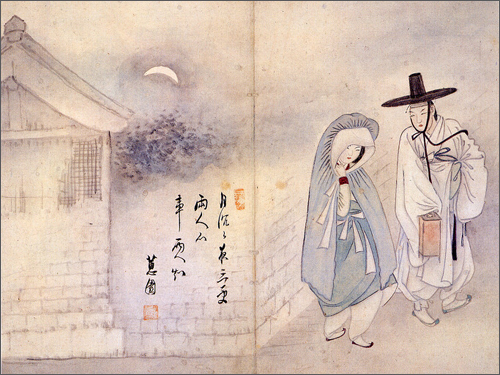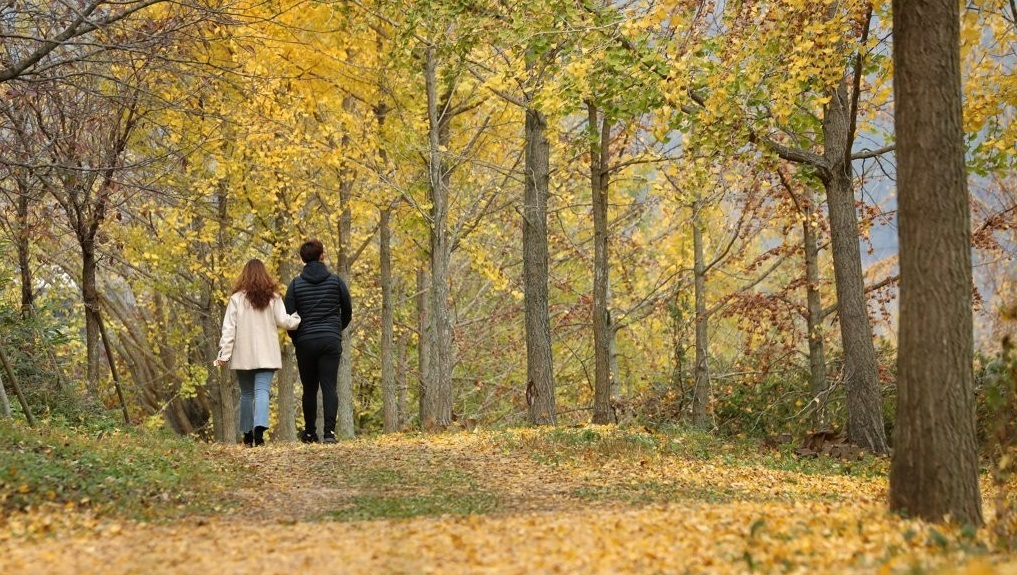How our ancestors asked, ‘Will you be my Valentine?’
On the day of spring awakening, Joseon lovebirds exchanged ginko fruits as love tokens
By Choi Jae-heePublished : Feb. 10, 2022 - 18:45

Heart-shaped chocolate gifts, flower bouquets and cute stuffed toys are prominently displayed at brick-and-mortar retail stores and online shopping malls. Restaurants and hotels are decked out with romantic decorations, enticing couples with special promotions. Valentine’s Day is just around the corner.
An apparent foreign import, the annual Feb. 14 festivity has now firmly taken root in Korea as one of the most romantic days on the calendar.
“Valentine’s Day is no longer just about women (expressing their affections to men). By exchanging gifts and going on romantic dates, lovers celebrate the day together,” said a 30-year-old single woman surnamed Choi who works in the retail industry.
During the Joseon era, long before Valentine’s Day was introduced here, lovebirds on the Korean Peninsula had one March day set aside for a special, romantic date. It was Gyeongchip Day, one of the 24 seasonal divisions of the lunar calendar when frogs wake up from hibernation and the spring begins.
On Gyeonchip, which usually falls around March 5-6, couples exchanged ginkgo fruits as proof of their love. While women gave round-shaped nuts from female ginkgo trees, men offered ones with a triangular shape from male trees. Since ginkgo trees produce their fruit mostly in October or November, lovers acquired the berries in fall and cherished them until spring.

Why smelly ginkgo berries?
In present-day Korea, ginkgo berries are often associated with their unpleasant stench, which is a constant source of headache to city officials and citizens across the country when they start falling on the ground.
However, they were deemed romantic gifts by couples in the Joseon era due to ginkgo trees’ longevity. Ginkgo trees are known to live for thousands of years, as they make protective chemicals that fend off diseases and drought. The Ginkgo biloba species is described as a “living fossil,” with its history dating back to the Jurassic period.
“Just like ginkgo trees, which survive for centuries or even millennia, Joseon couples wished for their love to be long-lasting. Agricultural books showed they had romantic dates by walking around ginkgo trees,” said history lecturer Choi Tae-seong.
By Choi Jae-hee (cjh@heraldcorp.com)








![[KH Explains] Hyundai's full hybrid edge to pay off amid slow transition to pure EVs](http://res.heraldm.com/phpwas/restmb_idxmake.php?idx=644&simg=/content/image/2024/04/18/20240418050645_0.jpg&u=20240419100350)







![[From the Scene] Monks, Buddhists hail return of remains of Buddhas](http://res.heraldm.com/phpwas/restmb_idxmake.php?idx=652&simg=/content/image/2024/04/19/20240419050617_0.jpg&u=20240419175937)

![[KH Explains] Hyundai's full hybrid edge to pay off amid slow transition to pure EVs](http://res.heraldm.com/phpwas/restmb_idxmake.php?idx=652&simg=/content/image/2024/04/18/20240418050645_0.jpg&u=20240419100350)

![[Today’s K-pop] Illit drops debut single remix](http://res.heraldm.com/phpwas/restmb_idxmake.php?idx=642&simg=/content/image/2024/04/19/20240419050612_0.jpg&u=)